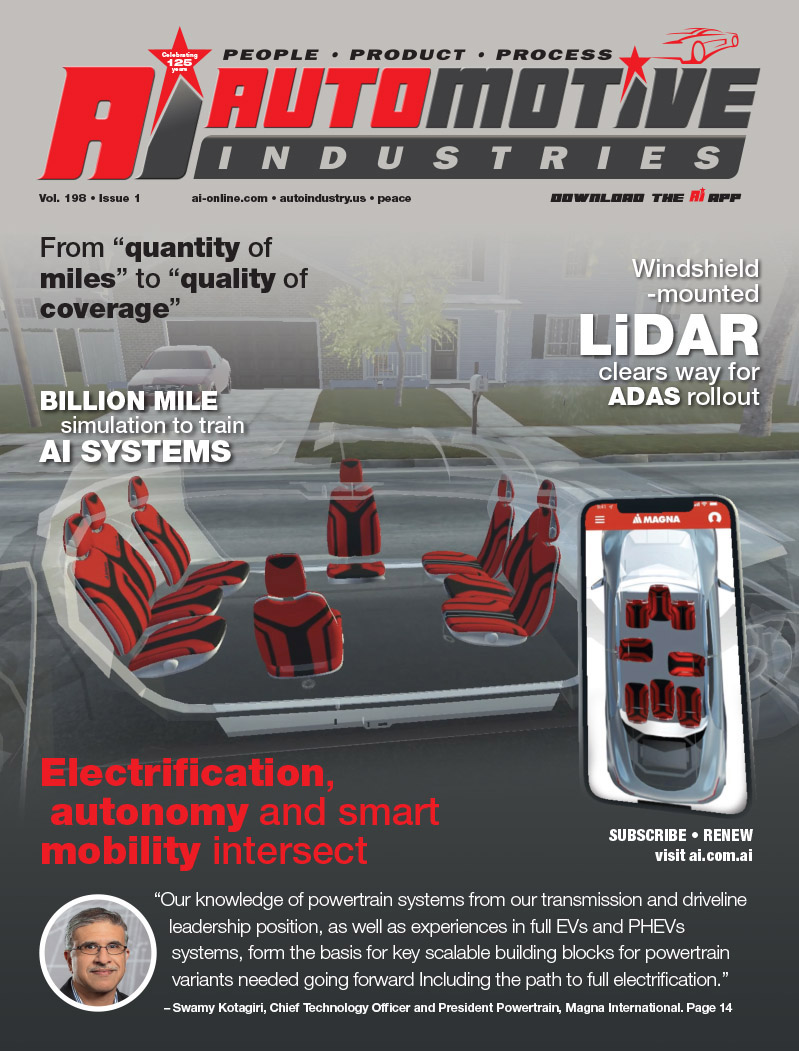
 The way telematics is currently used needs to change in order for it to be profitable, says Gary Wallace, vice president of external affairs for ATX — OnStar’s smaller competitor and telematics source for Mercedes-Benz, BMW and Jaguar. Instead of being seen only as a customer tool, the industry needs to look at it as a data source and a way to stay in touch with its customers, Wallace says.
The way telematics is currently used needs to change in order for it to be profitable, says Gary Wallace, vice president of external affairs for ATX — OnStar’s smaller competitor and telematics source for Mercedes-Benz, BMW and Jaguar. Instead of being seen only as a customer tool, the industry needs to look at it as a data source and a way to stay in touch with its customers, Wallace says.
On the customer side, telematics needs to be used for much more than reporting an accident or getting driving directions.
“We don’t think this business can survive strictly on a subscription basis,” Wallace says, who compares selling telematics to selling insurance. If you are in an accident you want it. If you’re not you don’t, he says. But this approach is fundamentally wrong. Automakers need to use telematics to better manage their business and their relationship to their customers. This will help OEMs cuts costs, increase profits and keep loyal customers.
“You’ve got a two-way link to the customer as they are using their product,” Wallace says.
The real return on investment, says Wallace, is if the automaker can use the data recorded by the telematics system. This allows the OEM to know what is going on with its rolling fleet, he says. The automaker will know what is not working, what is working well and what may need more explanation.
And since ATX is an independent company, drivers and automakers are more comfortable allowing ATX to record data and share it with OEMs.
The data can help automakers keep track of problems with vehicle components and may enable an OEM to speed a solution to market faster.
Telematics also must be applied to new aspects of car ownership. Earlier this year, ATX debuted its voice-activated owner’s manual. With the system, drivers would no longer need to flip through their owner’s manual to figure out how to perform vehicle functions like changing the time on their clock or opening the vehicle’s hood. Instead they can be verbally instructed on how to do these things.
The e-owners manual can also remind driver of when maintenance is needed or when specific vehicle functions should be inspected. If electronic prompts and keywords do not lead to a solution, the driver can ask for an operator, who will then attempt to find a resolution. ATX compares the system to having an automotive technician sitting in the passenger seat at all times providing simple, distraction- free answers to vehicle questions. “I believe our voice owner’s manual would be more useful than a regular owner’s manual,” says Tom Schalk, vice president of voice technology for ATX.
 |
Telematics must change to be profitable says Gary Wallace, ATX VP of external affairs. |
This means more vehicles through the service bay and more profit for the dealer. It also betters the relationship between the dealer and the customer, who will have to spend less time waiting for their vehicle to be repaired. Telematics also allows dealers to keep better track of customers. Postcards that are sent to the customer’s home warning of needed maintenance can be eliminated and replaced by a more mileage-accurate electronic notice inside the vehicle.
But before any of this can happen telematics must become more mainstream and must move from luxury vehicles down market to more volume segments.
To do this, telematics must shift from being optional to standard equipment, says ATX. “Our experience has been that optional programs don’t work,” Wallace says. Telematics equipment costs must be cut while services are modified in order to increase installations and move downmarket.
One of the keys to making telematics more profitable is to do away with embedded telematics and instead tie the system to a cell phone and an offboard system, says Schalk. This is much less expensive and allows virtually anyone with a cell phone access to telematics. Telematics services must change and move toward being more personalized for each segment of vehicles and different types of drivers. “Telematics in a luxury car must be much different than a compact car,” Wallace says. Finally, telematics services also must be vehicle centric.
Let’s face it, says Wallace, “there weren’t that many people who wanted to get e-mail in their car.”
Once people interact with the system they get used to it and the value proposition is there, says ATX. But the key is getting automakers to install it.
“This isn’t an off the shelf, one size fits all product,” Wallace says. “We sell this as a tool that benefits the automaker.”
ATX should know, it has been servicing its automotive customers since 1996, when its Protection One Mobile first started offering telematics service to customer. The company was launched nine months ahead of OnStar, says Wallace. It now has half a million customers in the U.S. and recently created a subsidiary in Europe.
The biggest difference between ATX and OnStar, says Wallace, is that OnStar offers a branded product, while ATX does not. Its service becomes whatever the OEM wants including Mercedes-Benz Tele Aid, Lincoln RESCU, Infiniti Communicator and Jaguar Assist.
Wallace says the number of customers renewing their ATX services is about 73 percent and even higher in the luxury brands. “If we can get more than a 70 percent renewal rate, it’s good,” he says.









More Stories
RAM Trucks in Toronto: Why CarHub North York Chrysler Delivers the Best Experience
Buying Car Insurance in Toronto? Don’t Make These Rookie Mistakes
Extend Your Range, Maximize Your Storage with FRDM’s 45 Gallon Combo